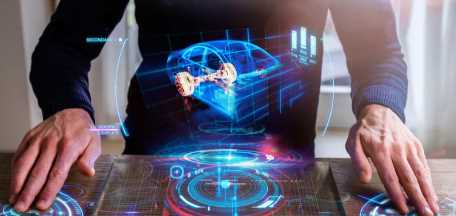Travel and transportation have, of course, been affected by how technology has revolutionised life and society as we know it. Since there has never been a greater need or desire for travel, technology has been used to raise the standard and effectiveness of all forms of transportation.It's crucial to understand that technological advancements in transportation don't always focus on making things faster. Better passenger experiences, as well as increased safety and security, can result from new technologies. Travel technology is also not just about the trip itself; it may also refer to the organisation and planning of transportation.
1. How Technology Has Changed Airline Industry
The aviation sector is one of the few that is so entwined with technological marvels. Technology advances recently have changed every aspect of flying, from locating the best deals to what we do in the middle of the journey. Additionally, there are current developments in travel technology, such as robotic assistants and high-tech luggage.
Purchasing Tickets
Even before travellers reach the airport, changes to the airline business have already taken place. Modern travellers can utilise a variety of websites to get the best deals and make reservations online rather than going to a travel agency.
Features of Security
Air travel security has grown in importance since the turn of the twenty-first century, and technology is essential to its success. The focus of these advancements in transportation technology has been on the detection of drugs, weapons, and contraband as well as the immigration screening of travellers.Airport security has implemented 3D full-body scanners and other high-tech procedures to stop prohibited things from being brought onboard. Recent advancements in scanner technology may even allow passengers to bring liquids onboard once more.
Facilities on Board
Then there is the way in which travel technology has been applied to improve passengers' experiences once they are in flight. In-flight entertainment has changed significantly over the years, moving from a few shared televisions per plane to individual screens with a wide variety of multimedia options. If you don't decide to utilise your own laptops, tablets, or smartphones to keep yourself entertained, that is.
2. How Trains Have Changed Due to Technology
The delight and entertainment of passengers are also greatly improving, in addition to train speeds. Similar to airlines, trains now allow for easy planning, ticket purchasing, and seat reservations, giving passengers peace of mind that they will stick to their intended timetable.
The Internet has also significantly altered passenger behaviour. Passengers can stay in touch when travelling by train and stream material to their various gadgets thanks to the availability of Wi-Fi. You can use pocket Wi-Fi devices to stay connected even on trains without Wi-Fi so that you never miss out on what's occurring.
3. How Technology Has Changed Cars
It's not surprising that vehicles have evolved as various technological sectors haveadvanced because they play a significant role in modern life. Driving has seen a significant transformation in recent years, including changes in how automobiles are propelled as well as how they are used and accessed.
Apps for sharing rides
Ride-sharing applications have upset the market and emerged as an incredibly popular alternative in major cities, where taxis have traditionally been a crucial service for those wishing to move around by automobile. Through their mobile apps, services like Uber and Lyft link drivers and passengers in a kind of on-demand carpooling. Thanks to rating systems and the ability to track your car with the driver's information, ride-sharing is frequently seen to improve consumer experiences.
Self-Driving Vehicles
The concept of autonomous or self-driving cars is another development that has not fully developed. To get a passenger to their destination, these vehicles manage traffic and road networks using a variety of technical information inputs.
It is believed that when effectively implemented, it has a wide range of advantages, from fewer accidents to better traffic flow. Of course, this strategy also offers advantages for those who are unable to drive or have mobility challenges because it makes transportation more accessible to them. Self-driving technology still raises significant issues, such as the possibility of software bugs and collisions with pedestrians.
4. Changes in Personal Transportation Due to Technology
It is simple to focus on how technology has altered the main modes of transportation while ignoring all the individual modes. A wide variety of 'personal transporters' or 'electric rideables' have emerged since the Segway hit the market in 2001. This new era of individualised transportation using technology is particularly prevalent in Japan.
Although standard bicycles and skateboards are still in use, other vehicles including hoverboards, e-bikes, and motorised scooters have also joined the mix. All of these reduce the physical effort required to move about.
Conclusion
Whatever the means of transportation—airline, train, vehicle, or personal—modern technological improvements have undoubtedly had a significant impact. Travel planning and booking, transit security, as well as the general comfort and enjoyment of contemporary travel, have all been impacted by these developments.
Transportation technology, travel technology, automobiles, and air travel




Leave Comment
1 Comments